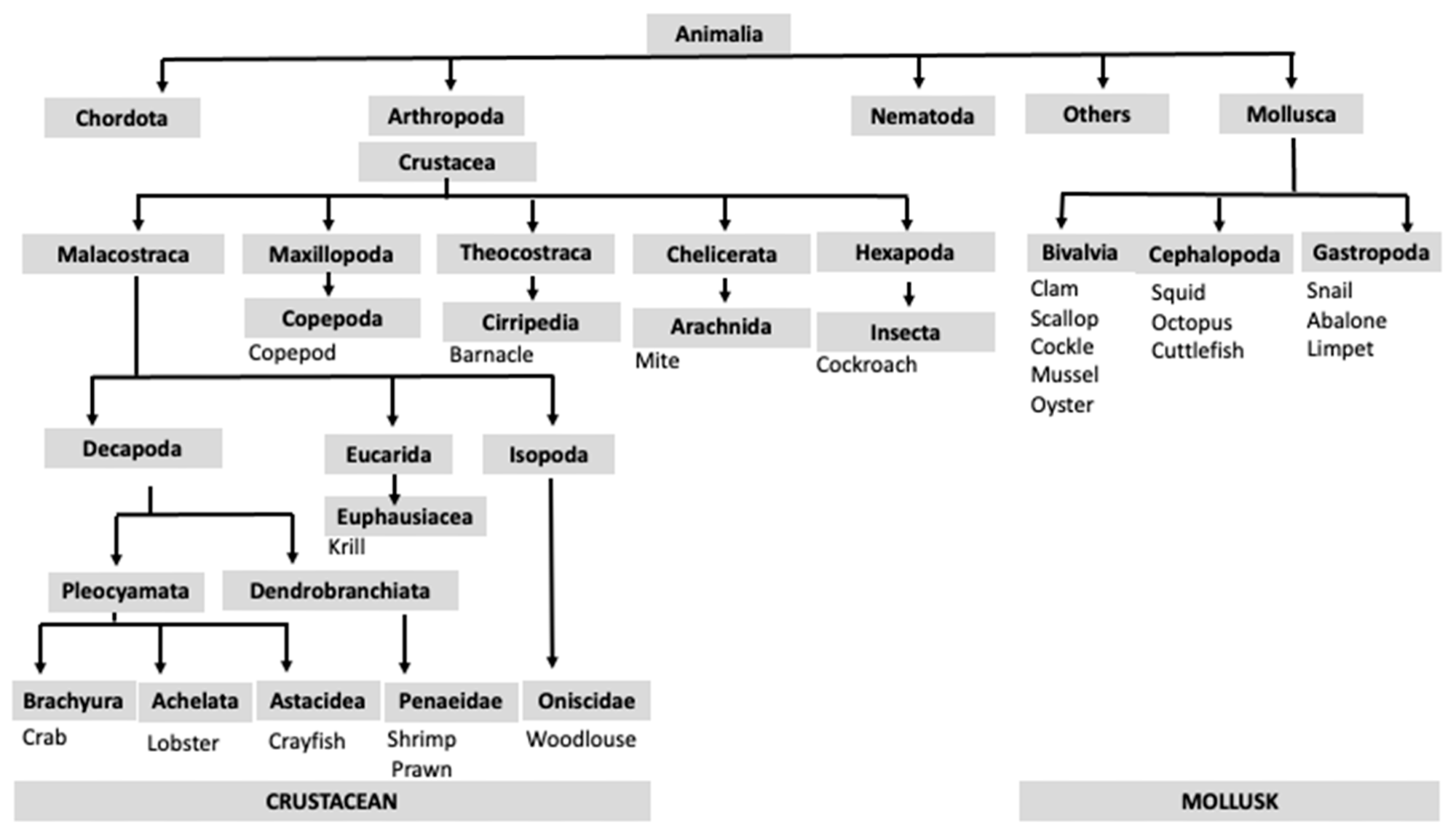Shellfish include various mollusks, oysters, and crustaceans that are highly rich in antioxidants, protein, and omega-3 fatty acids. Following the rise in shellfish consumption rates throughout the world, a corresponding increase in shellfish allergy rates has also increased.
In a recent review published in Nutrients, researchers describe the epidemiology, pathogenesis, clinical signs and symptoms, diagnosis, and management of shellfish allergies, with a particular focus on children.
 Study: IgE-Mediated Shellfish Allergy in Children. Image Credit: Lesterman / Shutterstock.com
Study: IgE-Mediated Shellfish Allergy in Children. Image Credit: Lesterman / Shutterstock.com
Epidemiology
Shellfish is one of the “big eight” allergenic food groups, as about 2.5% of the world’s population is affected by shellfish allergies, with individuals of Thailand, Taiwan, Singapore, and Vietnam descent often most severely infected. In the current study, researchers review studies that included children from various countries in their assessment of shellfish allergy.
In the EuroPrevall-iFAAM study, researchers enrolled children aged six to 10 years from eight European countries. Herein, crustacean allergies affected 0.2% of primary school children, as reported by their parents.
The second EuroPrevall-INCO survey study comprised children aged six to 11 years from Russia, India, and China. The percentage of children with shrimp allergen-specific IgE (sIgE) values exceeding 0.70 kUA/L was 13.1%, 10.3%, and 4.7% in Shaoguan, India, and Hong Kong, respectively.
A third East Asian survey study presented a parent-reported prevalence of over 5%, 3.4%, and 0.84% in children aged two to five years in Vietnam, Japan, and South Korea, respectively.
Adverse reactions to shellfish
The clinical manifestation of shellfish allergy in children and adults varies widely. One pediatric study evaluating children with shrimp allergy found that children most commonly suffered from cutaneous clinical manifestations and least with anaphylaxis at 70% and 12%, respectively. Comparatively, adult patients with shellfish allergy often have oropharyngeal symptoms such as swelled lips, tightness in the throat, and itchy mouth.
Immunoglobulin E (IgE)-mediated allergic reactions occurring within nearly two hours after shellfish consumption in children manifests as urticaria, angioedema, nausea, and respiratory problems, such as bronchospasm, laryngeal edema, and anaphylaxis. Non-IgE-mediated reactions, which are being increasingly recognized in children, typically manifest several days following allergen exposure and include food protein-induced enterocolitis syndrome (FPIES), food protein-induced allergic proctocolitis (FPIAP), and food protein-induced enteropathy (FPE).
An Italian survey study revealed that 81%, 13%, and 6% of 70 children with fish/shellfish-induced FPIES had reactions exclusively to fish, shellfish, and both fish and shellfish, respectively.
Viral and bacterial contamination of shellfish from Norwalk virus and Listeria and Salmonella species, respectively, can arise from polluted waters. Even filter-fed shellfish like oysters and mussels ingest toxic algae, the accumulation of which results in poisoning syndromes in its consumers. Some examples of these events include diarrhetic shellfish poisoning, paralytic shellfish poisoning, neurotoxic shellfish poisoning, ciguatera fish poisoning, and amnesic shellfish poisoning.
 Taxonomic classification of shellfish species within the Crustacea subphylum and the Mollusca phylum.
Taxonomic classification of shellfish species within the Crustacea subphylum and the Mollusca phylum.
Diagnosis and management
Clinicians advise a stepwise approach for the diagnosis of a shellfish allergy, in which allergy tests, including a skin prick test (SPT) and blood sIgE tests, are performed for patients with a clinical history of shellfish allergy.
Further diagnostic tests may include component-resolved diagnosis (CRD) and basophil activation tests (BAT). CRD enables the detection of sIgE reactions specific to individual allergenic molecules. Likewise, BAT, an in vitro functional assay, measures the percentage of activated basophils in response to a food allergen. However, the cost, reproducibility, and short-living nature of basophils limit the routine use of BAT.
Diagnosis also depends on other considerations. For example, most patients experience allergic signs and symptoms upon ingestion; however, skin contact or inhalation of aerosolized allergens during cooking might also cause allergic reactions.
Another consideration is that patients allergic to shrimp, crab, and lobster might be intolerant of other crustaceans due to allergen sequence homology. The incidence of cross-reactivity is over 75% among all shellfish-allergic patients.
A previous study assessing children with shrimp allergy revealed that cross-reactivity to other crustaceans and mollusks was 57% and 26%, respectively. Thus, an allergic workup is recommended for different types of shellfish allergens, especially when an individual does not consume allergen-containing food safely.
Some non-adverse immunologic reactions occurring later than two hours manifest as gastrointestinal and neurologic symptoms. Thus, even in the differential diagnosis of shellfish allergy, first-line diagnostic tests are SPT and sIgE after obtaining the patient’s clinical history. Double-blind placebo-controlled oral food challenge (DBPCFC) remains the gold standard diagnostic method for shellfish allergy.
Food allergen immunotherapy (FAI) has become a popular treatment to improve the quality of life of individuals affected by shellfish allergy. This treatment approach reduces the severe adverse reactions that arise following accidental exposure to shellfish allergens.
Conclusions
In the last twenty years, knowledge about the molecular features of different shellfish allergens improved the diagnosis and potential design of allergen immunotherapy for shellfish allergy; however, this data for the pediatric population is lacking. Thus, improving diagnostic accuracy is essential, and in vitro, assays represent promising tools in this context.
Researchers have extensively investigated allergen-specific immunotherapies (AITs) in preclinical models. Unfortunately, immunotherapeutic studies and many allergy-related diagnostic tools remain restricted to research studies. Thus, there remains an urgent need for large-scale cohort studies to validate the clinical efficacy of these treatments.
Journal reference:
- Giovannini, M., Beken, B., Buyuktiryaki, B., et al. (2023). IgE-Mediated Shellfish Allergy in Children. Nutrients 15(2714). doi:10.3390/nu15122714